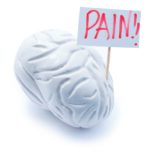Taken together, these studies and many others suggest a pivotal behind the scenes role for immune regulation in pain processing.
Where Do We Stand?
Despite the mounting evidence linking immunity and pain pathways, there is a hesitation on the part of some rheumatologists to fully embrace pain management. This attitude is understandable given the myriad challenges facing this clinical conundrum—the subjective nature of pain; the frequent need for potent analgesia, including opioids; the accompanying litigious issues regarding the pain’s causation that may need to be addressed; and the perception that pain management is adrift from the core principles of clinical rheumatology.
This concern has been previously raised, with some rheumatologists advocating that chronic pain disorders, such as FM, be managed by other specialties, notably primary care doctors and psychiatrists.10,11 In our June 2015 reader survey, a slim majority of respondents (56% vs. 44%) agreed with the statement that rheumatologists should be managing patients with FM. This conflict of opinion will likely persist until we gain an even deeper understanding of the relationship between pain and the immune system.
But we are rheumatologists. We are accustomed to dealing with uncertainty.
 Simon M. Helfgott, MD, is associate professor of medicine in the Division of Rheumatology, Immunology and Allergy at Harvard Medical School in Boston.
Simon M. Helfgott, MD, is associate professor of medicine in the Division of Rheumatology, Immunology and Allergy at Harvard Medical School in Boston.
Reference
- Lee YC. Effect and treatment of chronic pain in inflammatory arthritis. Curr. Rheumatol Rep. 2013 Jan;15(1):300. doi: 10.1007/s11926-012-0300-4.
- Lee YC, Lu B, Boire G, et al. Incidence and predictors of secondary fibromyalgia in an early arthritis cohort. Ann Rheum Dis. 2013 Jun;72(6):949–954. doi: 10.1136/annrheumdis-2012-201506. Epub 2012 Jul 11.
- Chen J. History of pain theories. Neurosci Bull. 2011 Oct 1;27(5):343–350.
- Mendell LM. Constructing and deconstructing the gate theory of pain. Pain. 2014 Feb;155(2):210–216.
- Jones AK, Huneke NT, Lloyd DM, et al. Role of functional brain imaging in understanding rheumatic pain. Curr Rheumatol Rep. 2012 Dec;14(6):557–567.
- Rech J, Hess A, Finzel S, et al. Association of brain functional magnetic resonance activity with response to tumor necrosis factor inhibition in rheumatoid arthritis. Arthritis Rheum. 2013 Feb;65(2):325–333.
- Sergeeva M, Rech J, Schett G, et al. Response to peripheral immune stimulation within the brain: Magnetic resonance imaging perspective of treatment success. Arthritis Res Ther. 2015 Oct 19;17:268.
- Austin PJ, Berglund AM, Siu S, et al. Evidence for a distinct neuroimmune signature in rats that develop behavioural disability after nerve injury. J Neuroinflammation. 2015 May 20;12:96.
- Gaudillière B , Fragiadakis GK, Bruggner RV, et al. Clinical recovery from surgery correlates with single-cell immune signatures. Sci Transl Med. 2014 Sep 24;6(255):255ra131. doi: 10.1126/scitranslmed.3009701.
- Weinblatt ME. ACR presidential address: The best of times, the worst of times: Rheumatology 2001. Arthritis Rheum. 2002 Mar;46(3):567–573.
- Ghazan-Shahi S, Towheed T, Hopman W. Should rheumatologists retain ownership of fibromyalgia? A survey of Ontario rheumatologists. Clin Rheumatol. 2012 Aug;31(8):1177–1181.
